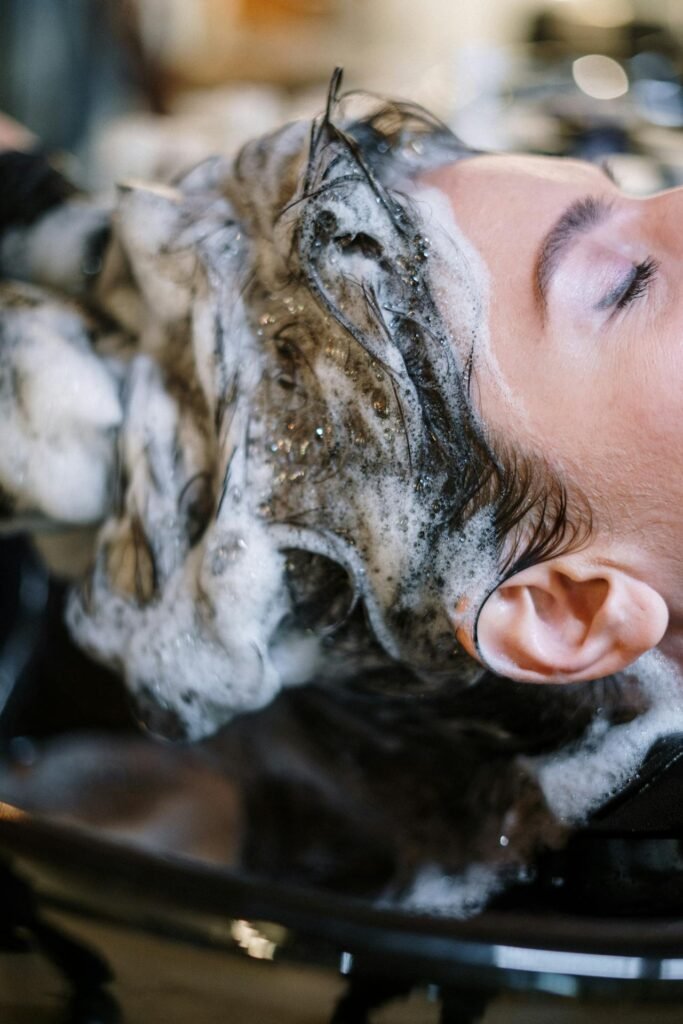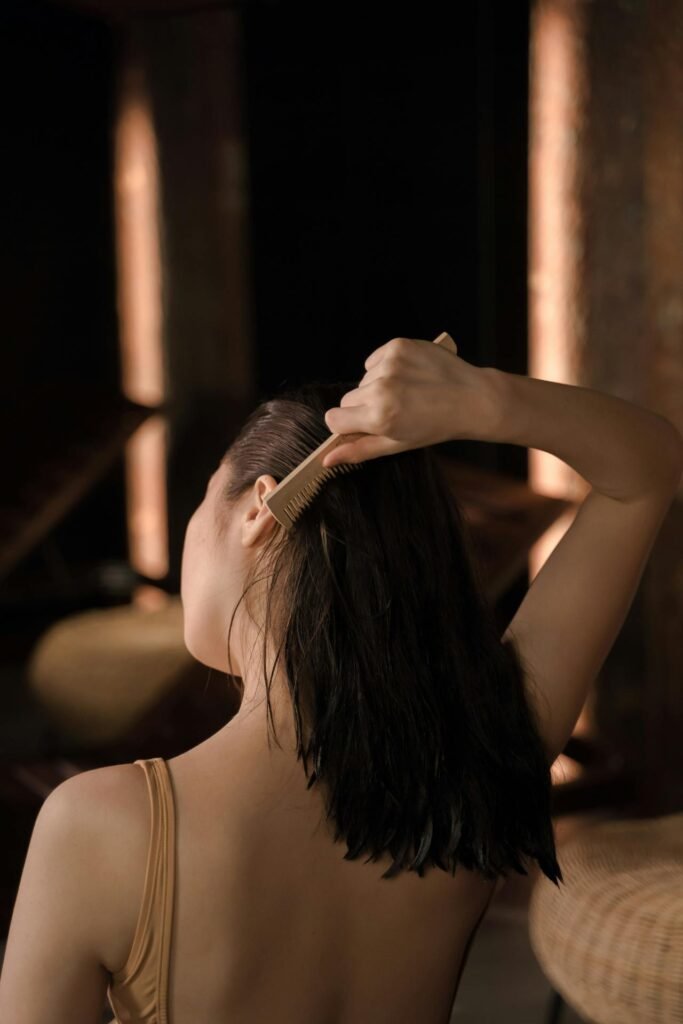5 Mistakes That Are Damaging Your Hair Daily
You wake up each morning and follow your usual routine, but what if that very routine is secretly sabotaging your hair?
Without realizing it, you might be making simple mistakes that damage your hair every single day.
These seemingly harmless habits can lead to breakage, dullness, and overall hair health decline over time.
1. You’re Over-Washing Your Hair

Your daily shampoo routine might feel refreshing, but you’re likely stripping your hair of its natural oils.
Most people don’t need to wash their hair every single day, yet you continue this habit thinking it keeps your hair clean and healthy.
When you wash your hair daily, you remove the natural sebum your scalp produces. This sebum acts as a protective barrier and natural conditioner for your hair strands.
Your scalp responds to this constant removal by producing even more oil, creating a vicious cycle.
Your hair type determines how often you should wash it. If you have oily hair, washing every other day might work for you.
For dry or curly hair, you can go three to four days between washes. Fine hair might need more frequent washing, while thick, coarse hair can handle longer intervals.
The key is finding your hair’s sweet spot. Start by extending the time between washes gradually.
Use dry shampoo on non-wash days to absorb excess oil and refresh your roots. Your hair will thank you for giving it time to restore its natural balance.
2. You’re Using Too Much Heat Without Protection
Your blow dryer, flat iron, and curling wand are damaging your hair every time you use them without proper protection.
Heat styling tools can reach temperatures over 400 degrees Fahrenheit, which is hot enough to literally cook your hair proteins.
You rush through your morning routine and skip the heat protectant spray, thinking it’s an unnecessary step.
This mistake costs you dearly in hair health. Heat damage causes your hair cuticles to lift and crack, leading to frizz, split ends, and breakage.
Your hair’s protein structure changes when exposed to high heat repeatedly. The keratin in your hair begins to break down, making your strands weak and brittle.
You might notice your hair feels rough or looks dull after months of unprotected heat styling.
Make heat protection a non-negotiable step in your routine. Apply a quality heat protectant from roots to tips before using any hot tools.
Lower the temperature settings on your tools – you don’t always need maximum heat to achieve your desired style.
Consider air-drying your hair more often or using heat-free styling methods to give your hair a break.
3. You’re Brushing Your Wet Hair Too Aggressively

You step out of the shower and immediately attack your tangled wet hair with a brush, but this aggressive approach causes significant damage.
Wet hair is at its most vulnerable state, with weakened protein bonds that make it prone to breakage.
Your hair shaft swells when wet, making it more elastic and fragile. Take your time and be patient – rushing this process only leads to more damage.
When you brush wet hair roughly, you’re stretching and snapping these weakened strands. This leads to breakage, split ends, and overall thinning of your hair over time.
You might think you need to detangle immediately to prevent worse knots, but there’s a gentler approach.
Start by gently squeezing excess water from your hair with a microfiber towel. Apply a leave-in conditioner or detangling product to create slip and make brushing easier.
Use a wide-tooth comb or a brush specifically designed for wet hair. Start detangling from the ends and work your way up to the roots gradually.
Your hair will maintain its strength and length when you treat it gently during its most vulnerable state.
4. You’re Using the Wrong Products for Your Hair Type
You grab whatever shampoo is on sale or use the same products your friend recommended, but your hair has unique needs that generic products can’t address.
Using products formulated for the wrong hair type can cause dryness, buildup, or inadequate cleansing.
Your hair’s porosity, texture, and scalp condition all influence which products work best for you.
Low porosity hair needs lightweight products that won’t create buildup, while high porosity hair craves heavier, more moisturizing formulas.
You might be using products that sit on your hair’s surface instead of penetrating and nourishing it properly.
Fine hair gets weighed down by heavy conditioners and oils, while thick, coarse hair needs rich, creamy products to stay moisturized.
Curly hair requires different care than straight hair, with specific ingredients that enhance curl formation and reduce frizz.
Take time to understand your hair’s characteristics and read product labels carefully.
Look for ingredients that address your specific concerns – protein for damaged hair, moisturizing agents for dry hair, or clarifying ingredients for buildup-prone hair.
Invest in products designed for your hair type rather than settling for one-size-fits-all solutions.
5. You’re Not Protecting Your Hair While You Sleep

You toss and turn all night on your cotton pillowcase, creating friction that damages your hair while you sleep.
Cotton’s rough texture grabs onto your hair strands, causing tangles, breakage, and frizz that you notice when you wake up.
Your hair rubs against the pillowcase for hours each night, creating mechanical damage that accumulates over time.
The friction lifts your hair cuticles and can even pull hair from your scalp. You wake up with bedhead that seems impossible to tame, not realizing your pillowcase is the culprit.
Cotton also absorbs moisture from your hair, leaving it dry and brittle by morning. Consider loosely braiding long hair or putting it in a high, loose bun to prevent tangling.
If you’ve applied leave-in treatments or oils before bed, your pillowcase soaks up these beneficial products instead of letting them work on your hair all night.
Switch to a silk or satin pillowcase that creates less friction and doesn’t absorb moisture from your hair.
These smooth fabrics allow your hair to glide easily as you move during sleep. Alternatively, wrap your hair in a silk scarf or wear a satin sleep cap to create a protective barrier.
Avoid tight hair ties that can create dents or breakage. Your morning routine becomes easier when you protect your hair overnight, and your hair stays healthier in the long run.
Conclusion
These five daily mistakes might seem minor individually, but their cumulative effect significantly damages your hair over time.
Make small changes to protect and nourish your hair every day.







